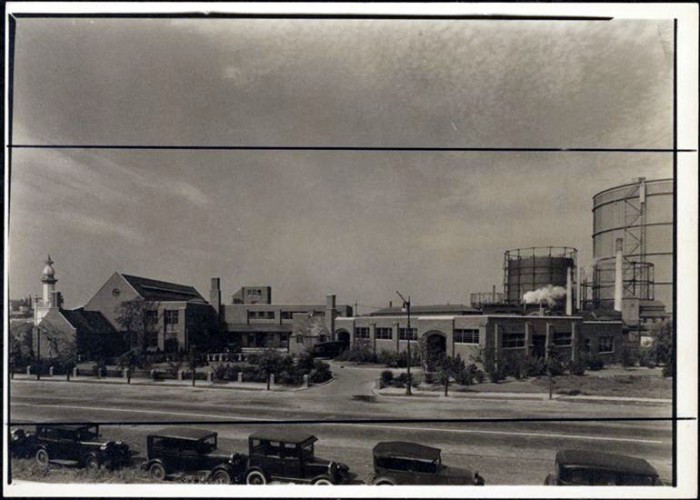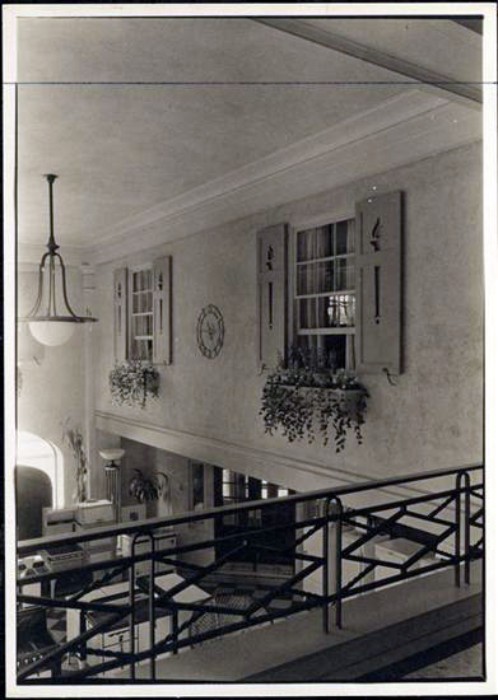Walkabout: Miss Dillon’s Gas Company, Four
Read Part 1, Part 2 and Part 3 of this story. In 1944, Mary E. Dillon was appointed the head of the New York City Board of Education. She was still the President of the Brooklyn Borough Gas Company, Coney Island’s independent gas company since the late 1800s. Miss Dillon had been an employee of…


Read Part 1, Part 2 and Part 3 of this story.
In 1944, Mary E. Dillon was appointed the head of the New York City Board of Education. She was still the President of the Brooklyn Borough Gas Company, Coney Island’s independent gas company since the late 1800s. Miss Dillon had been an employee of the company since 1903, and had risen through the ranks to become the first female president of the utility in 1926. She was the first female president of any utility in the world. She was well equipped for the job, and ran BBG for a total of 23 years. When tapped for the position at the Board of Ed, she was already a long-time member of her local School Board 39.
She still remained president of BBG when she took the position at 110 Livingston Street. Used to being a first, she was the first woman to head the NYC Board of Education, too. Not bad for a woman who had to leave Erasmus Hall High School in her senior year to go to work to support her family. She never graduated from high school, which never stopped her from achieving great heights.
Brooklyn Borough Gas was one of the last hold outs in the great consolidation of utilities. Brooklyn Union Gas, the borough’s giant, had long ago absorbed almost all of the other gas utility companies in Brooklyn and was still looking to grow. Mary and BBG withstood several offers from BBG and other utility giants to consolidate. There are advantages to being smaller, but there are also restrictions. BBG needed several rate hikes over the course of the mid-20th century, and none of them were well-received, especially during the Depression and the early years of World War II.
Under Mary Dillon’s leadership, they had a new headquarters built at 809 Neptune Avenue, at the corner of Shell Road, which was opened in 1930. It was a beautiful state of the art campus, stretched along a large plot of land, and included company offices, a showroom and demonstration laboratory, repair rooms, garages and utility buildings, and the huge gas tanks that stood behind it all. It was the most beautiful utility complex in New York City, and it belonged to little Brooklyn Borough Gas.
Women were the company’s target audience, as most of their business centered around the gas stove and other kitchen appliances. The showroom had all of the latest models of stoves on display, and the company’s kitchen and cooking demonstrators held classes and programs here, showing the ladies how to use the latest appliances, and also how to cook nutritious and economic meals on a budget. Their target audience was the middle and working class families of Coney Island, so whatever could make their lives better, through gas, was important news to be shared with the community. It was a very successful program.
There was always room to make the showroom better. The décor was meant to be comfortable and homelike, but also elegant. One wanted to be in a familiar and comfortable environment, but it didn’t hurt to aspire to better, so the showroom was quite modern and lovely. One corner had a fireplace and high cathedral ceilings, and was more like the grand homes of the new suburbs than a Coney Island flat.
BBG had prominent muralist artist Diego Rivera come to Brooklyn to paint a mural in the company’s offices on Mermaid Avenue. The mural was about four by six feet, and depicted a gas company and its workers. When it was revealed that the company had this done, in 1935, there was a lot of outrage from local politicians who questioned the spending. The headline of the newspaper piece about the work read, “Gas House Boys Go Ritzy.” Officials estimated that the mural would cost $2,545 to replace. It was much ado about very little, even for that time. Of course, a Diego Rivera would be worth a lot more now.
In 1949, after being president of the Brooklyn Borough Gas Company for 23 years, and President of the Board of Education for two, Mary E. Dillon retired. She had been employed by BBG since she was 17 years old. She gave 46 years to the company. Her replacement was Walter M. Jeffords. He would be the Brooklyn Borough Gas Company’s last President and General Manager.
Mary E. Dillon had been married to Henry Farber, a Brooklyn businessman. The couple had no children. In 1948, Farber died. Mary buried herself in work for a year, but it was time to move on. There was nothing holding her here anymore. After retiring from BBG, Mary moved to Vermont. She lived there until 1973, when she packed up and moved to Hawaii. She died on October 20th, 1983 at the venerable age of 93. What a life she had.
In 1956, there were three gas companies in Brooklyn. Brooklyn Union Gas covered almost all of the borough and much of Queens. Kings County Lighting Company serviced the Bay Ridge/Dyker Heights neighborhoods, a much smaller territory than the third company, Brooklyn Borough Gas, which served Coney Island, Gravesend and Sheepshead Bay. Con Edison controlled all of Manhattan and the Bronx, and on Staten Island, the New York and Richmond Gas Company serviced the island.
Brooklyn Union Gas made one more push to control the entire borough. That year, they successfully purchased the Kings County Lighting Company and the New York and Richmond Gas Company. Only Brooklyn Borough Gas held out. But the handwriting was on the wall. They would not be able to survive much longer. The company was struggling to keep up with costs and modernization, and stock prices were falling. In 1959, Brooklyn Union Gas finally took over Brooklyn Borough Gas. Walter Jeffords was out of a job. (He did just fine.)
When Brooklyn Union Gas was taken over by Key Span Energy, the facility changed signs once again. Gas had also changed. From its inception through Mary Dillon’s years at the company, gas was manufactured and refined at this plant through the burning and processing of coal. It was a messy business that took up a lot of room and equipment, and was the reason the two huge gas storage tanks loomed over the facility. That was just the very visible part of the operation, there were outbuildings and tanks, coal storage, generators, tar storage tanks and separators and more.
It goes without saying that all of this also produced a lot of contaminants. In 1951, BUG switched from manufactured gas to natural gas. Between 1961 and 1966, the company began dismantling the manufacturing facility, which was totally demolished and the grounds plowed over. By 1974, only one older gas gate facility was still in operation, and that had been switched over to natural gas, but by the 1980s, that too was gone. The only thing that remained of the 1930 facility was the campus of buildings that was the pride of the company.
The gas fields had been plowed under, and new topsoil had been laid. The city laid out two baseball diamonds on the site, but by 1996, the dangers of playing on brownfields were known, and the ball fields were closed. Brooklyn Union Gas, and then Key Span were now in charge of a huge contaminated site. They closed the campus and negotiated with the government as to how to clean it all up. They had to excavate the tar coal fields and dispose of all solid wastes off site. The Coney Island Creek had to be dredged and tons of contaminated sediment was carted off. An ecological buffer zone had to be created to prevent more contaminants from leaking into the creek, or in the surrounding land. All of this cost millions, and was undertaken in the early 2000’s.
The BBG Campus buildings sat vacant. X’s marked the buildings for demolition, but the entire campus was still eerily intact for years, a curiosity to those who passed and didn’t know its history. Many people assumed it always belonged to Brooklyn Union Gas, and only old time locals remembered Brooklyn Borough Gas. The last pictures on Google Maps, captured in 2012, show the buildings, abandoned with an X for demolition. The complex was torn down just this year, in February of 2014. A large self-storage facility is planned for the location. Another unique piece of Coney Island history is gone. Good thing Mary Dillon did not live to see it. GMAP
(BBG Showroom. 1933 photograph from the collection of the Museum of the City of New York)
Miss Dillon’s Gas Company: Part One
Miss Dillon’s Gas Company: Part Two
Miss Dillon’s Gas Company: Part Three




















Thank you for this. I remember those gas tanks and those buildings, from the ’70s I think, when they were still in use. I never knew what they were but they stood out as lovely among the trash that Coney Island had become.